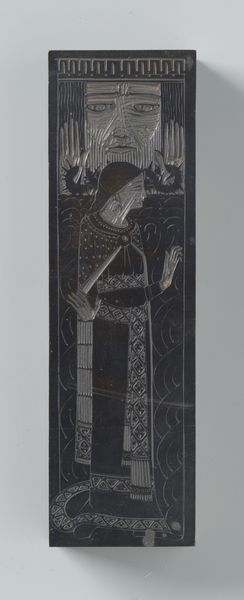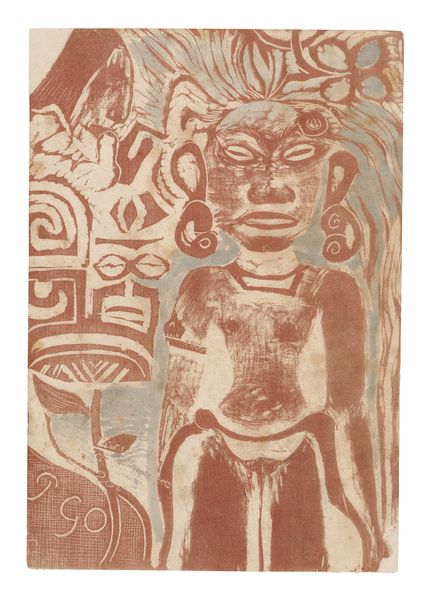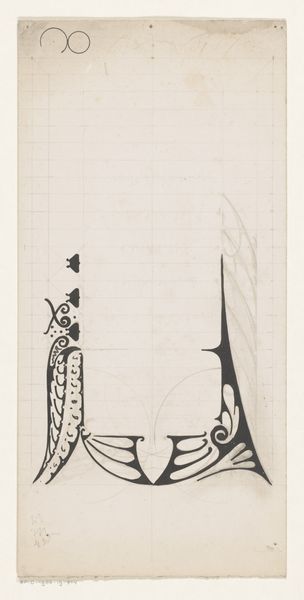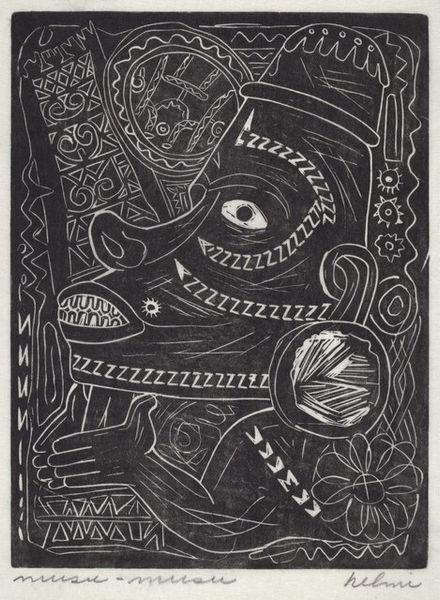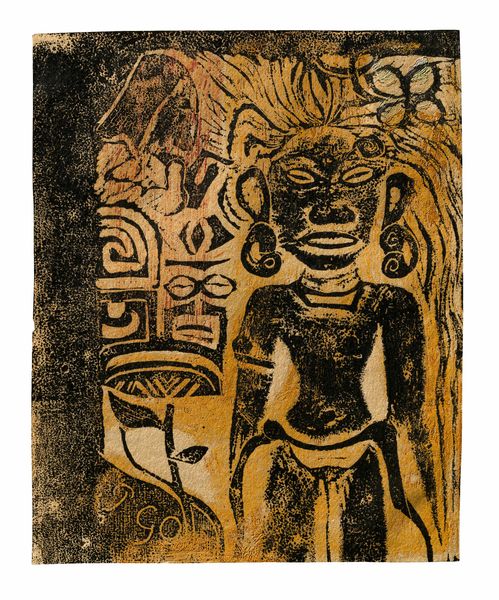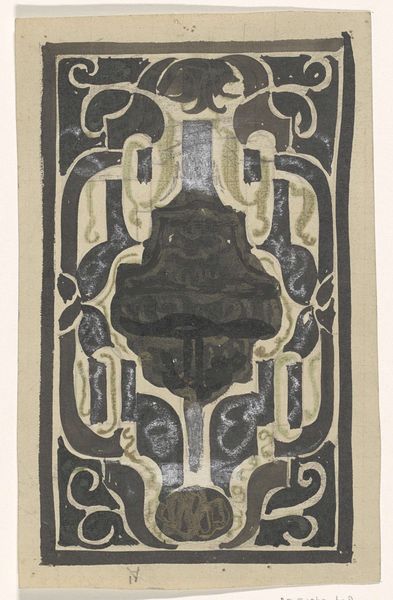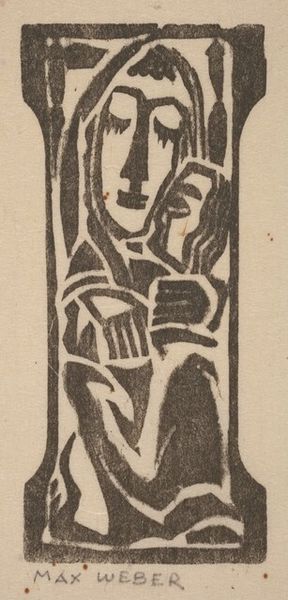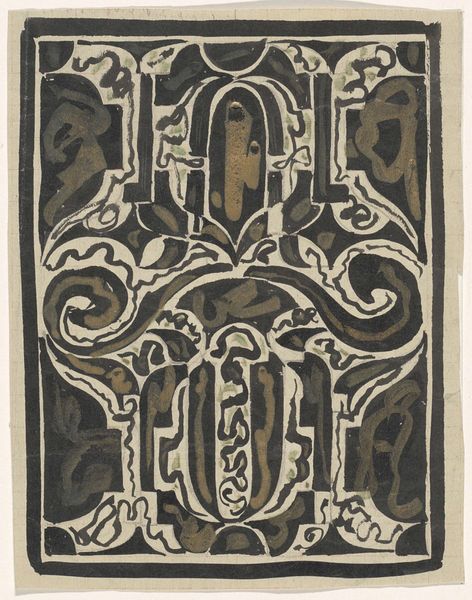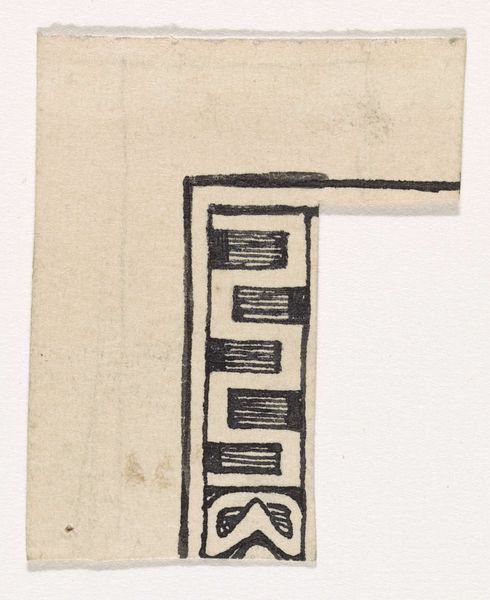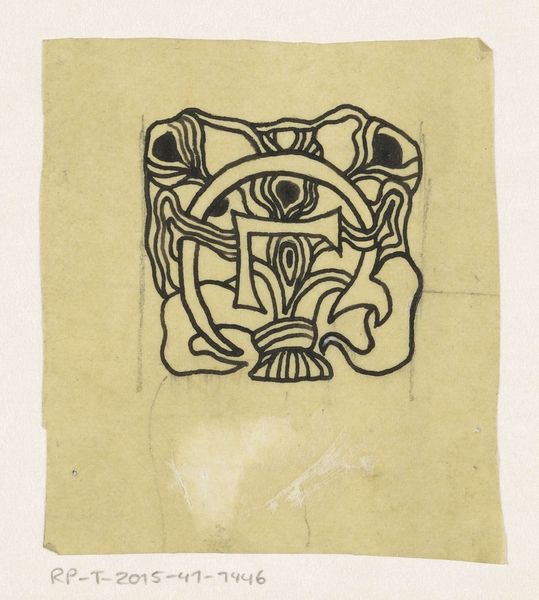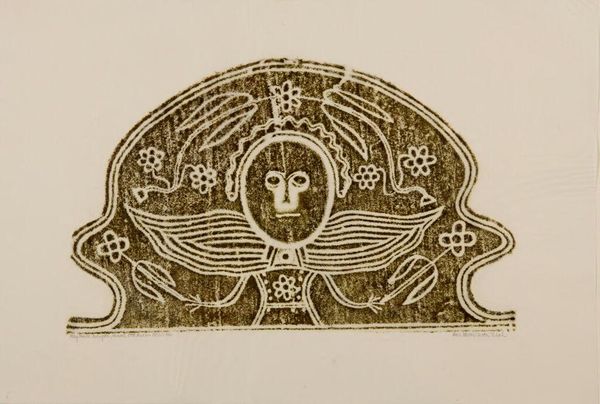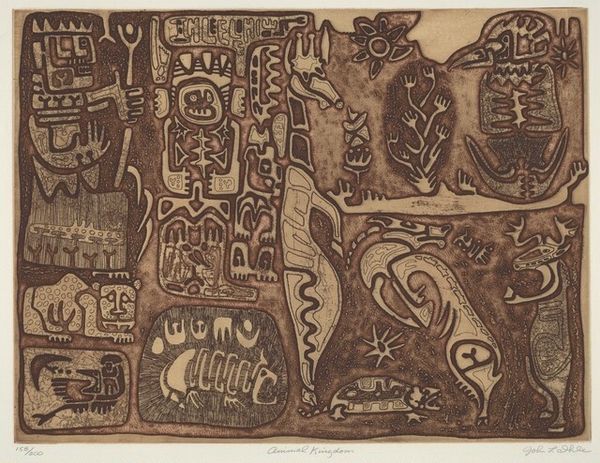
Dimensions: sheet: 20 1/2 x 10 1/4 in. (52.1 x 26 cm) image: 15 7/8 x 5 3/8 in. (40.3 x 13.7 cm) mount: 16 x 22 in. (40.6 x 55.9 cm)
Copyright: Public Domain
Editor: Here we have Paul Gauguin's "Christ on the Cross," created around 1926. It's a linocut print, and I’m struck by how flattened the image is. It almost feels like an ancient carving. What do you make of its composition? Curator: The simplification of form is certainly paramount. Note the stark contrast between the black ink and the bare paper. Gauguin eschews traditional modelling in favor of bold shapes and patterns. Consider the flattened perspective, especially evident in the figure of Christ and the surrounding ornamentation. Editor: It almost looks like a totem pole. The figures above the Christ figure... they're not exactly reverent. Is there some symbolic significance in how he organized the composition? Curator: Indeed. It's not merely decorative. Observe how the surface is segmented into distinct registers. Each section presents us with a series of abstract motifs that challenge a conventional reading of Christian iconography. Look at how he uses pattern and shape to deny a seamless narrative, which contributes to its unsettling affect. Does the material contribute meaning? Editor: I see what you mean. The rough texture of the linocut adds to that primitive feel, almost like it was carved rather than printed. It certainly subverts any sense of idealized beauty. Curator: Precisely. The artist has deliberately foregrounded the materiality of the work itself, a quality emphasized by its deliberate primitivism, resisting straightforward representation and promoting material expression. Editor: I hadn’t really considered the effect of the medium itself before, but I can appreciate the importance of how he juxtaposes surface with recognizable forms and cultural references now. Curator: Examining how the artist manipulates these formal elements encourages us to see the print not merely as a representation, but as an object in its own right. I will certainly give more consideration to technique in terms of meaning.
Comments
No comments
Be the first to comment and join the conversation on the ultimate creative platform.

